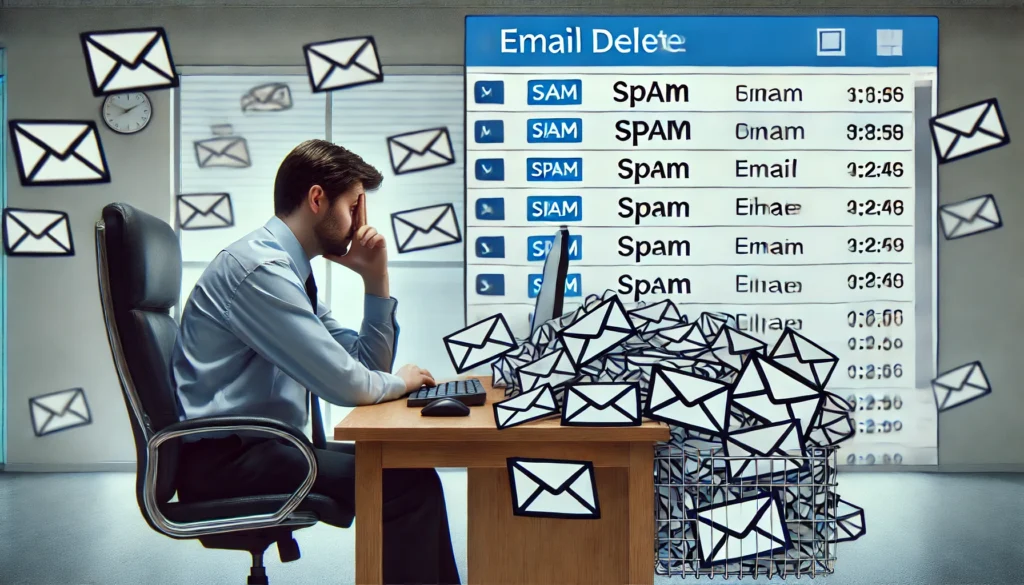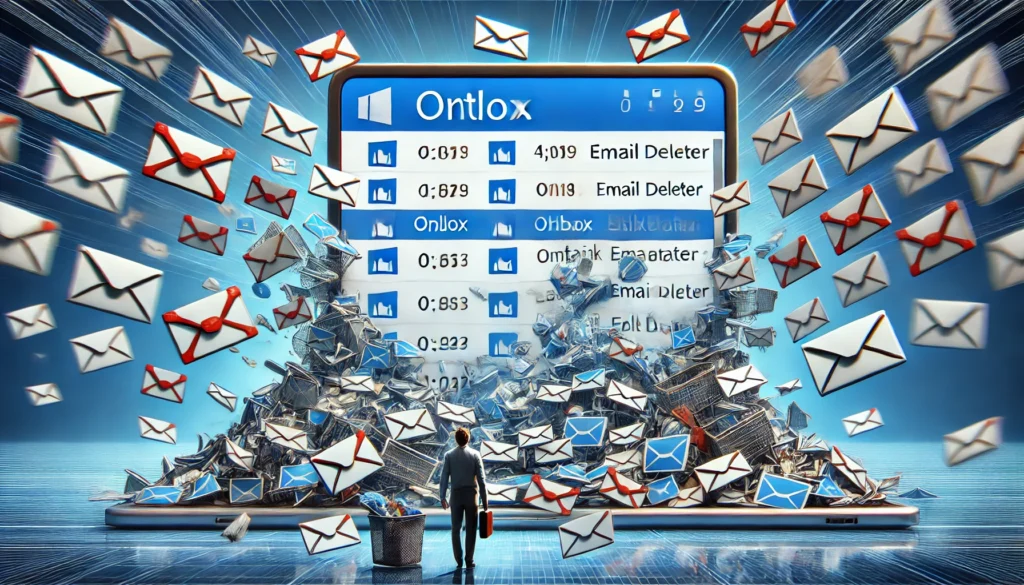Navigating the digital world often involves managing the influx of emails that can clutter your inbox, detract from productivity, and contribute to digital stress. If you’re using Microsoft Outlook and find your inbox overwhelmed with unwanted emails, learning how to unsubscribe effectively can streamline your experience and enhance your digital wellness. This step-by-step guide will lead you through the process of unsubscribing from emails on Outlook, empowering you to take control of your digital correspondence.
You may also like: Top Email Deleters for Inbox Management
Understanding the Importance of Email Management
In today’s fast-paced world, maintaining an organized inbox is paramount for efficiency and mental clarity. Unwanted emails can act as digital noise, distracting you from important tasks and increasing cognitive load. Moreover, excessive email clutter can be a breeding ground for phishing attacks and scams, posing potential security risks.
Reducing Digital Noise
Digital noise is more than just a distraction; it can significantly impact your mental health and productivity. Each time you check an irrelevant email, it interrupts your workflow and requires you to refocus. Over time, this constant switching can lead to fatigue and decreased efficiency. By minimizing digital noise, you create a more focused environment conducive to productivity.
Mitigating Security Risks
Email clutter not only affects your productivity but also poses security threats. Unsolicited emails can be phishing attempts or contain malicious links that, once clicked, compromise your data. Regularly clearing out unwanted emails and unsubscribing from non-essential mailing lists reduces the risk of falling prey to such threats, thereby safeguarding your digital life.
Enhancing Mental Clarity
An uncluttered inbox contributes to enhanced mental clarity. By managing your emails effectively, you reduce the cognitive load associated with sorting through a chaotic inbox. This clarity allows for better decision-making and a more focused approach to your daily tasks, ultimately leading to improved personal and professional outcomes.
For health and wellness coaches, science journalists, and biohackers alike, managing email effectively is crucial. Whether you’re sharing the latest health trends with clients, crafting engaging articles, or seeking cutting-edge biohacking information, a streamlined inbox aids focus and productivity.
How to Unsubscribe from Emails on Outlook
Let’s dive into the practical steps to unsubscribe from emails in Outlook. This guide will walk you through the process on both the web version and the desktop application.
Unsubscribing via Outlook Web
1. Log into Your Outlook Account: Begin by logging into your Outlook account through your preferred web browser. Ensure you’re using a secure network to protect your login credentials.
Logging in securely is the first step toward effective email management. Always verify that you’re on the official Outlook website to avoid phishing attempts. Using a secure network prevents unauthorized access to your account, thereby maintaining your privacy.
2. Navigate to Your Inbox: Once logged in, head over to your inbox to identify the emails you wish to unsubscribe from. Organizing your inbox by sender or subject can make this process more efficient.
Sorting your inbox helps in quickly identifying unwanted emails. Most email clients, including Outlook, offer sorting options that group emails by sender or date, which can expedite the search for emails you want to unsubscribe from. This step can save you time and effort in managing your digital correspondence.
3. Open an Unwanted Email: Click on an email that you no longer wish to receive. This email should have an unsubscribe option, typically located at the top or bottom of the message.
Opening the email allows you to locate the unsubscribe link easily. It’s essential to ensure that the email is from a legitimate sender before proceeding with the unsubscribe process. This caution prevents accidentally engaging with malicious content.
4. Find the Unsubscribe Link: Look for the “Unsubscribe” link within the email. This link is often located in the footer and is required by law for marketing emails.
The presence of an unsubscribe link is a legal requirement for marketing emails, ensuring you have control over your subscriptions. If an email lacks this link, consider marking it as spam, especially if it’s unsolicited. This action informs your email provider about potential spam, improving its filtering system.
5. Follow the Unsubscribe Instructions: Click the “Unsubscribe” link and follow the prompts. This may redirect you to the sender’s website, where you can manage your email preferences or confirm your desire to unsubscribe.
Following the unsubscribe instructions carefully ensures the process is completed. Some services may require additional steps, such as logging into an account or selecting specific preferences. Taking these actions guarantees that you won’t receive unwanted emails in the future.

Unsubscribing via Outlook Desktop
1. Open Outlook: Launch the Outlook desktop application on your computer. Ensure your software is up to date for the best security and performance.
Keeping your software updated is crucial for security reasons. Updates often include patches for vulnerabilities that could be exploited by malicious entities. An updated application also provides a smoother user experience with the latest features.
2. Select the Email: Navigate to your inbox and select the email from which you want to unsubscribe. Using the search function can expedite finding specific senders or subjects.
The search function in Outlook is a powerful tool for managing your inbox. By entering keywords or sender names, you can quickly locate emails that need attention. This efficiency is particularly useful for those with large volumes of email.
3. Locate the Unsubscribe Option: Similar to the web version, open the email and search for the “Unsubscribe” link. This is often found in the same locations, such as the header or footer.
Consistency in email layouts makes finding the unsubscribe link straightforward. Familiarize yourself with the typical email structure to streamline the process. Consistent practice reinforces the habit of managing subscriptions effectively.
4. Click and Confirm: Click on the link and follow the subsequent instructions to complete the unsubscribe process. Take note of any confirmation screens to ensure the process is finalized.
Confirming the unsubscribe action is a critical step. Some services might ask for feedback or offer alternatives to unsubscribing, such as reducing email frequency. Consider these options if the content is valuable but overwhelming in volume.
Utilizing Outlook’s Built-in Features
Outlook offers built-in features to help manage unwanted emails:
- Sweep Function: This feature allows you to quickly delete multiple emails from the same sender or move them to a folder. Access it by selecting an email and clicking on “Sweep” in the toolbar.
The Sweep function is ideal for decluttering your inbox efficiently. By setting criteria for sweeping, such as deleting all messages older than a certain date, you can maintain a cleaner inbox with minimal effort. This automated approach saves time and reduces the manual labor of email management.
- Block Sender: If you want to stop receiving emails from a specific sender entirely, right-click the email and select “Block Sender.” This will move all future emails from this sender to the Junk Email folder.
Blocking senders is a proactive measure against spam. It’s particularly useful for persistent unsolicited emails that bypass unsubscribe links. By directing these emails to the Junk folder, you minimize their impact on your inbox.
- Rules Setup: Create rules to automatically handle incoming emails based on specific criteria. For example, you can set a rule to move all emails from a particular sender to a designated folder.
Setting up rules customizes your email management system. Rules can be as specific or broad as needed, from sorting by keywords to flagging important messages. This tailored approach optimizes the way you interact with your inbox, ensuring priority emails are always visible.

The Role of Digital Well-being
Digital well-being is an integral component of overall health. Just as physical clutter can create stress, digital clutter can affect mental health. By managing your inbox, you can reduce distractions and foster a more serene digital environment.
Balancing Technology Use
Balancing technology use is essential for maintaining digital well-being. An organized inbox is a starting point for managing screen time effectively. By handling emails efficiently, you spend less time on digital devices, allowing for more engagement in offline activities that boost mental health.
Reducing Stress Through Organization
An organized inbox reduces stress by providing a sense of control over your digital space. Knowing that your emails are sorted and prioritized alleviates anxiety related to missing important communications. This organization contributes to a more relaxed mindset, essential for maintaining mental health.
Encouraging a Minimalist Digital Space
Embracing minimalism in your digital space involves curating the content you engage with daily. By unsubscribing from unnecessary emails, you simplify your digital environment. This minimalism supports focus and clarity, aligning with broader wellness goals to reduce mental clutter and enhance life quality.
For health and wellness coaches, guiding clients to manage digital spaces can be part of a holistic approach to wellness. For science journalists and biohackers, a clutter-free inbox ensures that vital information isn’t lost amidst the noise.
Beyond Unsubscribing: Tips for Maintaining an Organized Inbox
While unsubscribing is a powerful tool, maintaining an organized inbox involves ongoing effort. Here are some additional strategies:
Regular Decluttering
Set aside time each week to clean up your inbox. Delete unnecessary emails and organize important ones into folders.
Regular decluttering prevents your inbox from becoming overwhelming. By scheduling time for this task, you ensure that it becomes a routine part of your digital hygiene. This proactive approach maintains the balance and order necessary for a stress-free digital experience.
Email Filters
Use filters to automatically sort emails into folders, prioritizing important correspondence and minimizing distractions.
Filters are an automated way to manage incoming emails. By sorting messages based on sender, subject, or keywords, you ensure that critical communications are highlighted. This system reduces the need to manually sift through your inbox, enhancing efficiency.
Mindful Subscription
Be selective about the newsletters and updates you subscribe to. Consider their value and relevance before subscribing.
Mindful subscription involves evaluating the necessity and benefit of each newsletter or update. By subscribing only to content that adds value to your personal or professional life, you prevent unnecessary email accumulation. This conscious approach supports a clutter-free inbox and a focused digital presence.

Conclusion
Mastering the art of unsubscribing from unwanted emails in Outlook is a step toward reclaiming control over your digital space. By following these steps and integrating additional email management strategies, you can enhance your productivity, focus, and overall digital well-being. Whether you’re a health coach guiding clients, a journalist seeking clarity, or a biohacker optimizing your environment, a streamlined inbox is key to success.
Remember, managing your digital correspondence is not just about efficiency—it’s about fostering a balanced relationship with technology that supports your personal and professional goals. Through effective email management, you cultivate a digital environment that enhances your quality of life and empowers your pursuits.
Further Reading:
How to Unsubscribe from Emails on Outlook
How to declutter your inbox and unsubscribe from unwanted emails
How to manage email subscriptions in Outlook.com
Important Note: The information contained in this article is for general informational purposes only, and should not be construed as health or medical advice, nor is it intended to diagnose, prevent, treat, or cure any disease or health condition. Before embarking on any diet, fitness regimen, or program of nutritional supplementation, it is advisable to consult your healthcare professional in order to determine its safety and probable efficacy in terms of your individual state of health.
Regarding Nutritional Supplements Or Other Non-Prescription Health Products: If any nutritional supplements or other non-prescription health products are mentioned in the foregoing article, any claims or statements made about them have not been evaluated by the U.S. Food and Drug Administration, and such nutritional supplements or other health products are not intended to diagnose, treat, cure, or prevent any disease.


